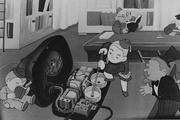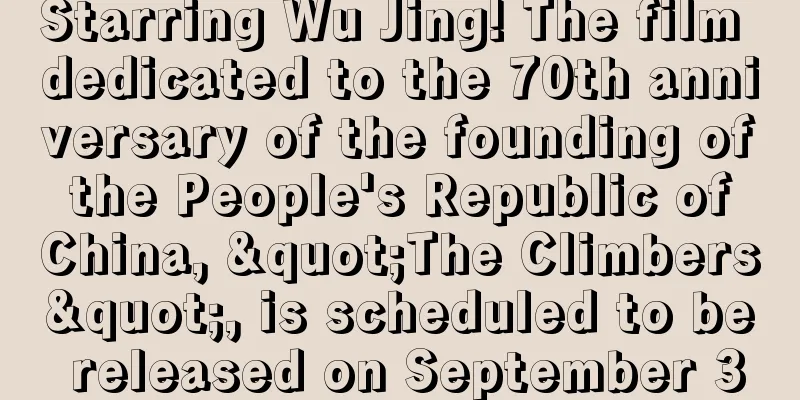"The Phone Call" review: A fascinating story and deep characters

"The Little Telephone": The appeal of this animated film depicting the spread of telephones in postwar Japan■ Public Mediatheater ■ Original MediaAnime Original ■ Release dateApril 17, 1953 - January 1, 0000 ■ Number of EpisodesEpisode 1 ■ Director・Live-action director: Ken Akimoto ・Animation director: Yasushi Yabushita ■ ProductionProduced by Toko Films, Nichido Films ■ StoryA telephone arrives on Dwarf Island. The device is disassembled, and telephones are installed on Dwarf Island as well. The king tests the first voice, but there is only static, and the Minister of Telephones in charge is extremely worried. The minister's son and the king's princess are engaged, but the engagement is cancelled as a result of this incident. Meanwhile, the minister, his son, and engineers head off to a country with advanced telephone technology to inspect the situation. The princess of Dwarf Island has had her engagement broken off, falls ill, and is unsure of how long she will live. The investigation team hurries back to Japan, where the telephone is successfully connected and the princess recovers, and everyone is happy. Source: History of Japanese Animation Films ■ExplanationThis film introduces the services provided since the Ministry of Telecommunications became the Nippon Telegraph and Telephone Public Corporation, and also shows how to make an automated call correctly. The combination of moving images and live action is unusual. Source: History of Japanese Animation Films ■ Main staffProduced by Toko Films, Nichido Films Script by Ken Akimoto Live-action director Ken Akimoto Animation director Yasushi Yabushita Cast Mariko Ike, Kazuo Mayumita ■Detailed story and character analysis"The Dwarf's Telephone" is an animated film set against the backdrop of the spread of telephones in postwar Japan, and while its story is deceptively simple, it contains a profound message. The story begins with a telephone that washes ashore on Dwarf Island. The film depicts attempts to disassemble the telephone and introduce telephones to Dwarf Island. However, when the king uses the phone for the first time, there is a terrible amount of static, which perplexes the Minister of Telephones. This episode symbolizes the immaturity of telephone technology at the time, and the struggles of the people who tried to introduce the new technology despite that. The central characters of the story are the Minister of Telephone, his son, and the King's Princess. The Minister's son and the King's Princess are engaged, but the engagement is cancelled due to the failure of the telephone installation, leading to a dramatic turn of events. This episode shows how technological advances affect people's lives and relationships. In particular, the scene where the Princess falls ill from the shock of her engagement being called off leaves a strong impression on the viewers. Meanwhile, the Minister of Telephone, his son, and a group of engineers are on a tour of advanced telephone countries. This scene depicts how Japan at the time tried to learn about and introduce telephone technology. The tour team quickly returns to Japan, the telephone system is successfully installed, and the princess regains her strength in the happy ending, conveying the message that technological progress ultimately leads to happiness for the people. ■Production background and technical features"The Little Telephone" was produced as a PR film to introduce the services offered after the Ministry of Telecommunications became the Nippon Telegraph and Telephone Public Corporation. It also has a strong educational element, as it aims to teach people how to properly dial an automated telephone. The film is also noteworthy for its use of a technique that was rare at the time: the combination of moving image and live action. The live-action parts were directed by Akimoto Ken, while the animation parts were directed by Yabushita Yasuji. Akimoto Ken also wrote the script, and succeeded in creating consistency in the story development and character portrayal. Yabushita Yasuji realistically depicted the world of Dwarf Island in the animation parts, helping to draw the viewer in. Mariko Ike and Kazuo Mayumita also star in the film, and their acting is also an important element in adding excitement to the story. ■ Evaluation and impact"Dwarf's Telephone" has been highly praised for its depiction of the spread of telephones in postwar Japan. It has been particularly praised for its depiction of how technological advances affect people's lives. It has also attracted attention for the technical challenge of combining moving images with live action. This work is a valuable document that shows how Japan at the time introduced new technology and tried to popularize it in society. The film also has a strong educational element, fulfilling its purpose of teaching viewers how to properly dial an automated telephone. Not only did the film teach viewers how to use the telephone, it also allowed them to understand how technological advances can change people's lives. In this respect, The Telephone of the Midgets is an important film. ■ Recommendations and related works"Dwarf's Telephone" is a valuable work that depicts the spread of telephones in postwar Japan, and provides an opportunity to think about the relationship between technological progress and people's lives. I highly recommend it to anyone who is interested in how technological progress affects people's lives. I also recommend it to anyone who is interested in the technical challenge of combining moving images and live action. Related works include "The Birth of the Telephone," which also depicts the technological progress of postwar Japan, and "The World of Automatic Telephones," which depicts the spread of automatic telephones. Like "The Telephone of the Dwarfs," these works also depict the relationship between technological progress and people's lives, providing interesting perspectives. Conclusion"Dwarf's Telephone" is an animated film that depicts the spread of telephones in postwar Japan, and through its story and characters, it depicts how technological advances affect people's lives. The technical challenge of combining moving images and live action is also noteworthy, and the film also has a strong educational element. This is a valuable work that provides an opportunity to think about the relationship between technological advances and people's lives, and I highly recommend it. |
<<: "Scarecrow" Review: Exploring the Depth of the Story and Charming Characters
>>: Forest Concert: A moving experience of beautiful melodies in harmony with nature
Recommend
The Witcher animated film The Witcher: Nightmare of the Wolf has been released
Today (December 21), the LOGO of "The Witche...
New stills from the horror series The Hunt will be released exclusively on Disney+ on December 28
Adapted from the well-known manga, the new Japane...
39 independent film and television projects will not be restricted by the US actors' strike clause
Thirty-nine independent films and TV shows will b...
The appeal and reviews of Kenko Zenrakei Suieibu Umisho: A youthful swimming story that you can enjoy to the fullest
Kenkou Zenrakei Suieibu Umisho - Review and Recom...
Mysterious! A thorough evaluation of the horror legend of Frankenstein
Fearful Legend Mystery! Frankenstein - Fearful Le...
The charm and depth of Caligula: A new experience through the fusion of psychological depiction and music
"Caligula": A story of youth torn betwe...
Review of "Coffin Princess Chaika": An adventure story woven with a unique world view and charming characters
"Coffin Princess Chaika" - A unique wor...
The appeal and reviews of "I Shaved. Then I Brought a High School Girl Home": A moving story and the depth of the characters
A comprehensive review and recommendation of &quo...
Forced cuteness! The Douding version of Godzilla planned to commemorate the 65th anniversary of Godzilla's birth is eye-catching
Japan's classic giant monster Godzilla is wor...
The appeal and reviews of "North. Pure Session": A journey of emotion
North. Pure Session - North. Pure Session Overvie...
Unknown people highly imitated the official Twitter of the animation studio to spread the false news that the sixth part of "JOJO" will be animated
Recently, there has been a rumor online that the ...
DC's new series "Superman & Lois" premiered with an IGN score of 8: Departing from the Green Arrow Universe but with great creativity
The new DC superhero series "Superman & ...
"Golden Country Water Country" animation film trailer starring Minami Hamabe
Based on the popular manga by Nao Iwamoto, which ...
"Aquaman 2" domestic promotion: Jason Momoa visits the Forbidden City and climbs the Great Wall
In order to promote "Aquaman 2" which w...
"Mulan" casting special released: Liu Yifei is the only one who can play the role of Mulan
Today (August 26), the casting feature of "M...









